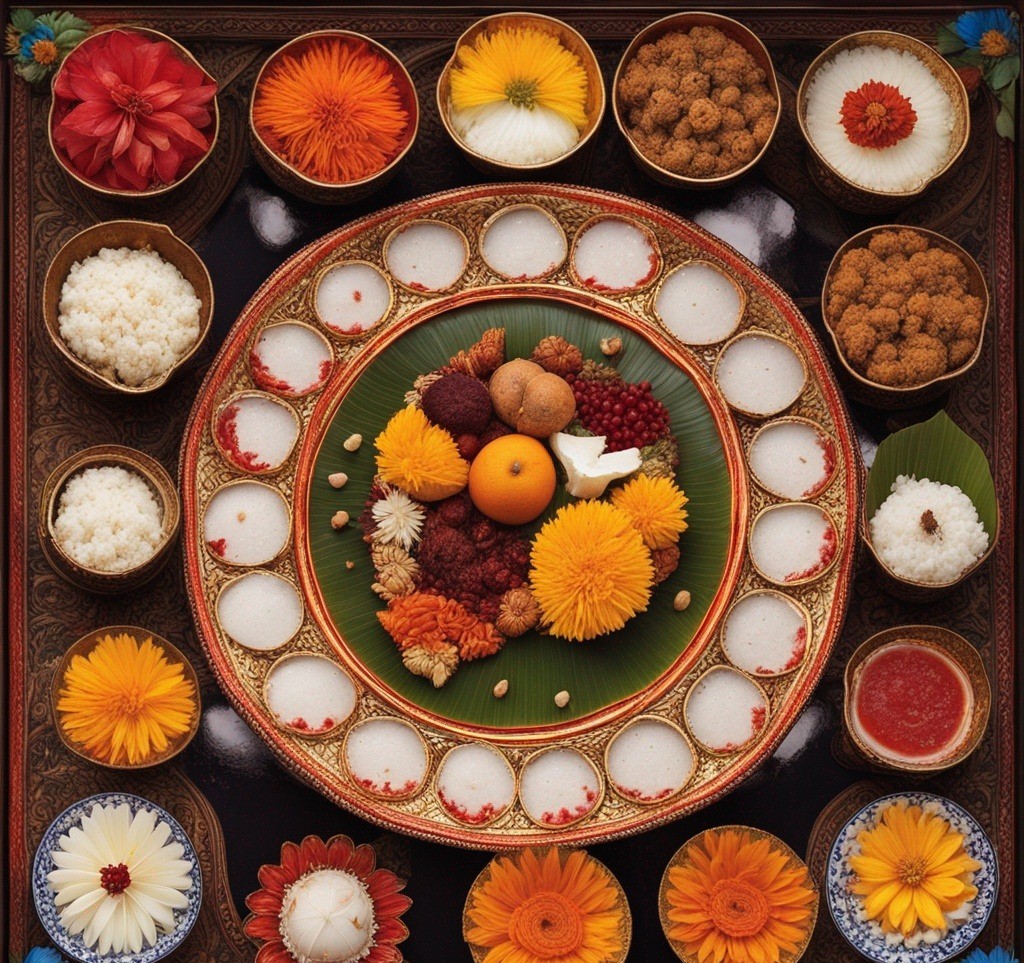Shodash Matrika Puja

About the Puja
The Shodasha Matrika Puja is an important Hindu rite dedicated to the worship of the sixteen divine mother goddesses called the Shodasha Matrikas. These deities are believed to be manifestations of the supreme goddess Adi Shakti and symbolizing various aspects of divine feminine energy. The word "Shodasha" means sixteen, and "Matrika" refers to the mother goddesses, each with distinct characteristics and powers. Through this puja, devotees pray for their blessings, protection, prosperity, and spiritual enlightenment. Among the Shodasha Matrikas are Brahmi, Maheshwari, Kaumari, Vaishnavi, Varahi, Indrani, Chamunda, Narasimhi, Vayuvati, Rudrani, Vinayaki, Yogeshwari, Mahalakshmi, Mahakali, Saraswati, and Bhadrakali. Worshipping these goddesses in conjunction is believed to provide stability and'a balance in life and secure the devotees against all evil energies and all other obstacles.
Significance of Shodasha Matrika Puja
The Shodasha Matrika Puja has tremendous spiritual and astrological significance. It is performed for expelling negative influences, curing certain planetary doshas, and removal of obstacles due to negative cosmic forces. These divine mothers act as guardians of the cosmic order, and thus they are invoked for health, wealth, and prosperity. This puja is used to solve problems with career, marriage, or health and to drive away evil spirits and black magic. According to devotees, worshipping the sixteen divine mothers brings courage, wisdom, and steadiness in life. The ritual is conducted during auspicious occasions such as Navaratri, full moon days, or special family functions.
History Behind Doing This Puja
The worship of Matrikas dates back to ancient Hindu scriptures, including the Vedas and Puranas. The Matrikas appear in the Devi Mahatmya and the Agni Purana, depicted as fierce warriors assisting Goddess Durga in her warfare against demons. The Matrikas in the traditions of tantra were worshiped as powerful feminine deities in charge of each aspect of the cosmos. Throughout history, Shodasha Matrika Puja has been performed by sages, kings, and seekers of divine blessings for the welfare of their kingdoms, families, and spiritual journeys. The practice of worshipping diverse aspects of the divine feminine energy evolved over centuries, weaved with threads of Vedic rituals and tantric practices to provide a strong means of inviting cosmic blessings.
Offerings Made in the Puja
Offerings are the most vital parts of Shodasha Matrika Puja, depicting devotion and gratefulness. Several sacred items are presented during the ritual, each carrying deep spiritual meaning-powerful enough to cleanse the Air. Fresh flowers, preferably red and white-these popularly offered to each goddess. Seasonal fruits, coconut, jaggery, modaks, and laddoos are all forms of sacred, sweet. Dhoop (incense sticks) and Deepam (lamps) were lit to purify the surroundings, and Turmeric (haldi) and Vermilion (kumkum) were put on the Idols, or images of the goddesses, Incense sticks and lamps lit purify the surroundings. A special naivedyam-the offering-made from rice, ghee, honey, and milk-is offered, together with betel leaves and nuts, considered auspicious. Holy water from the Ganges or any sacred river is used for external purification and abhishekam. Each of these offerings is believed to attract divine blessings, thus enhancing the spiritual essence of the puja.

Shodasha Matrika Puja Vidhi
Performing Shodasha Matrika Puja involves a detailed and disciplined procedure. The following steps outline the traditional method:
Step 1-Purification and Preparation
Devotees take a ritualistic bath and wear clean clothes, preferably traditional attire. The puja area is cleansed and decorated with rangoli and flowers. A kalash filled with water is placed at the center, on top of which are placed mango leaves and a coconut.
Step 2-Invocation of the Goddesses
Both a priest and devotees chant ancient mantras to invoke the Shodasha Matrikas. Sacred images or idols of sixteen goddesses are arranged in a designated order. The prayer of intent, named Sankalpa, states the intentions associated with the puja.
Step 3-Offering Rituals
Flowers, kumkum, haldi, and sandalwood paste are offered to each goddess. The deities are worshiped by lighting deepam and dhoop. Mantras specific to each Matrika are chanted for invoking their blessings. ###Step 4-Abhishekam(Holy Bathing Ritual) The idols are bathed with holy water, milk, honey, and panchamrit. Hymns from the Durga Saptashati and Lalita Sahasranama are recited by the devotees.
Step 5-Aarti and Prayers
Aarti is performed with camphor and ghee lamps, and singular prayers sung. Devotees pray for both their protection and fruits of wholesome prosperity.
Step 6-Concluding Rituals
Kalash water is sprinkled around for purifying the space. Prasad is distributed among the devotees. A closing prayer is said as a gesture of gratitude toward the Divine Mothers.
Prasad Distribution
The Prasad is an essential part of the puja, symbolizing blessings of divinity. The Prasad usually consists of sweets, fruits, and sacred food offerings such as kheer or chana dal. It is first presented to the Deity before being distributed to devotees, signifying the grace showered upon them by divinity. While many devotees prepare and distribute extra food among family, friends, and non-privileged people, they remain a symbol of sharing and community bonding. Eating joined people purify the soul and bring fortune and positive energy.

Conclusion
Shodasha Matrika Puja is a traditional revered invocation of divine feminine strength for protection, prosperity, and spiritual well-being. The performance of the ritual with devotion invites blessings, overcomes challenges, and bestows inner peace for a prosperous life.




